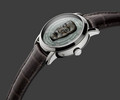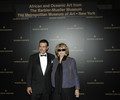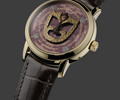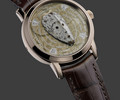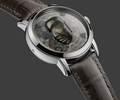2009 - Celebration of a collection “Les Masques” part 2
2009 - Celebration of a collection “Les Masques”
| Rating: 55 %1000 with 395 votes |
 Yes 1
Yes 1  Not so much 0
Not so much 0
- Summary
- Vacheron Constantin Métiers d’Art “Les Masques”
- 2009 - Celebration of a collection “Les Masques” part 2
- 2009 - Celebration of a collection “Les Masques” part 3
- 2009 - Celebration of a collection “Les Masques” part 4
During a visit to the Ethnographic Museum at the Trocadéro in Paris, he found material to nurture his formal quest: “All alone in this frightful museum with masks, Red Indian dolls and dust-covered mannequins. The Demoiselles d’Avignon must have come to me that very day, not at all because of the forms, but because it was my first exorcism painting!”(1). According to the painter Wassily Kandinsky, Picasso “owes the success of his quest to African art”(3). And he was not the only one. “A whole string of French painters and, in their wake, foreign painters set off down this newly-opened path; this was the starting point of the Cubist movement,” he wrote in 1910 (3).
It was after discovering rice spoons from the Ivory Coast that Giacometti sculpted his Spoon Woman in late 1926. In 1936, the Exposition Surréaliste d’Objets, organised by André Breton at the Charles Ratton Gallery, brought together for the first time works by Salvador Dali, Max Ernst, Mirò and Giacometti with four Eskimo masks belonging to the Heye Foundation in New York. The tribal art of the Americas, with its various objects made from recuperated and ingeniously recycled material, was an unrecognised area at that time.
Mirrors of the human and divine
While painters, sculptors and poets were quick to appreciate the intrinsic artistic value of these objects, institutions took a little longer, so these masks and statuettes were more often than not exhibited in ethnographic rather than art museums.
The value of tribal art does not reside essentially in its aesthetic aspect, even though this is important. Its true beauty is linked to its usage and use, to the hands which have held it and touched it. Not to mention the powers with which it has been invested on a particular continent, at a particular time, by a particular people, according to a particular religious tradition. Like the reredoses of the Middle Ages or Giotto’s frescoes, these masks have a function associated with initiations and religious rites and denote social distinction. They are, at the same time, the personification of a divinity and a spiritual entity, as well as a mirror held out to men, across time and borders, encouraging them to ask themselves those universal questions relating to the mysteries of birth, life and death, and to the relationship between the visible and invisible, between the human and the divine.
The true Art of time
Setting aside the symbolism and magic associated with these masks, there is a certain logic in bringing tribal art and the art of watchmaking together: both are the offspring of time.
The real sculptor of an object, the one who gives it its patina and significance, who hollows out or softens its contours, is time. Masks were born of a necessity. Used at every ritual, serving to mark the seasons and accompanying both the living and the dead, they possessed a clear chronological dimension. It is also easy to draw a parallel between the anonymous work of a sculptor who has created a mask and that of a watchmaker at his workbench, working away for months, sometimes years, to bring a new movement to life. When the work is finished, both craftsmen are dispossessed of the object, which does not usually bear their name. It becomes instead the property of the person who uses it and will be passed down from generation to generation, bearing with it so many questions and so few answers.




